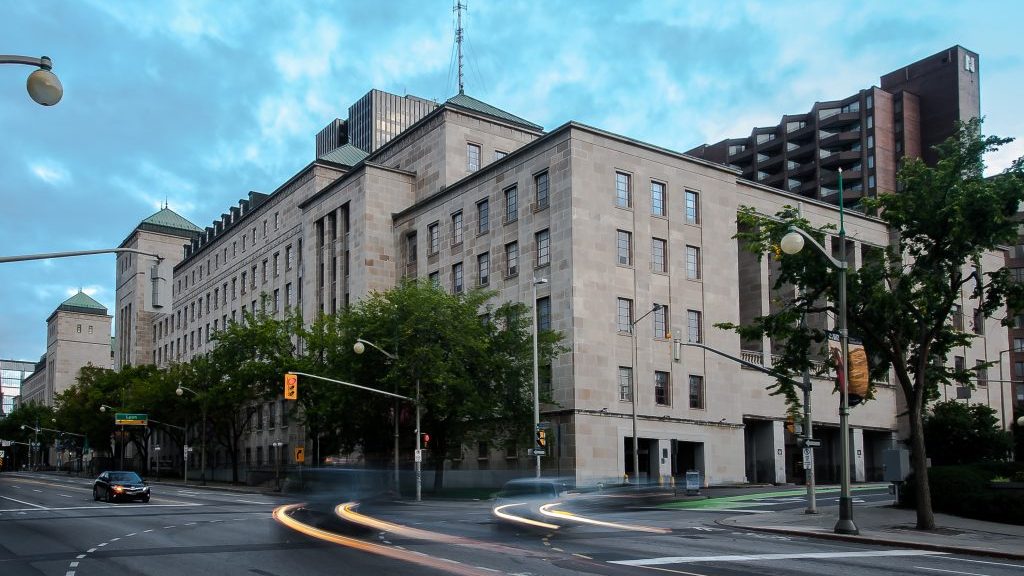Canada’s property project manager is turning bricks into code for its own buildings and to better serve the industry.
Real Property Services (RPS) project management service line director general Pierre Tessier spoke recently at CanBIM’s virtual conference about how his organization is pushing procurement into the digital realm.
The COVID-19 pandemic has simply accelerated the process, he said.
“Our main mission is how do we digitize our business and become more virtual? It’s more topical now when everyone is working from home, and it really points to how we become more agile with digitization of the business,” Tessier said.
“We want to leverage the data in our systems and visualize it to better understand it and to lead us to better decision-making.”
RPS is a branch of Public Services and Procurement Canada (PSPC) and Tessier said the vision for the department is to develop a suite of policies around asset management that transitions from paper-based work to a Building Information Modeling (BIM) and data-based set of intelligence.
“For our property framework we’ve added a principle on data management and quality. Ten to 15 years ago, people knew about these things, but they weren’t paying much attention to it,” Tessier said.
RPS is now focusing on how to implement the data in practical terms, he said, both with a smart building initiative and by pairing data with geographic information systems (GIS) and enterprise systems.
As of January 2020, we have eight per cent of our portfolio digitized,
— Pierre Tessier
Real Property Services
While industry and government are now committed to digitization, Tessier said challenges remain.
“It means taking decades of old processes into a new structure. Doing this is a new way of doing things and it takes a lot of effort to get there,” he explained.
“What’s good for enterprise data isn’t always good for asset data, and we can’t handle infrastructure data as we have financial data. They’re connected, but they need different data management strategies entirely.”
Tessier added RPS is working on a “spatial data warehouse” with BIM data a key part of the process.
“BIM is a missing link for RPS. In all our efforts to bring our vision to reality, our biggest gap is in legacy data and BIM,” he said.
RPS was not initially ahead of industry regarding data but efforts to change that began around 2008-2009, he said, and in 2012 the organization worked on Carling Campus, the Department of Defense’s national headquarters as its first digital-focused project.
“As of January 2020, we have eight per cent of our portfolio digitized, mostly in the national capital region as most of the buildings owned are in this region as well,” Tessier said.
One of the key projects RPS is working on is the rehabilitation of the West Memorial Building in Ottawa, a $1 billion project which, when complete, will accommodate the daily operations of occupants of the Supreme Court of Canada building.
The building was constructed between 1954 and 1958 but has been empty since 2008 due to its overall poor condition and related health and safety issues, the PSPC website stated.
Rehabilitation will include upgrading the mechanical, electrical and life safety systems, along with modernization of networking systems and equipment and seismic upgrades.
“One of the benefits (of digitization) of the project has already been realized, as we made a key discovery that there as an overpouring of glass and concrete structures when compared to the as-built documents,” Tessier said. “We were able to address those flaws early on in the design phase, which lets us be quicker in construction.”
Building renovations began in 2019 and will continue to 2023. From 2023 to 2028 the building will house the Supreme Court of Canada, the Federal Court and the Federal Court of Appeal.
In a wider context, Tessier said the “service desk of the future” will allow RPS and stakeholders to make adjustments using real time context and data by integrating with smart buildings and BIM.
“BIM was the missing piece in our DNA,” he said. “As efforts fall into alignment, the enterprise view on data creates linkages between pieces.”
By combining real-time data with enterprise systems, it’s also possible implement government directives such as greenhouse gas emissions.
“We’re able to tell early if there’s issues in the building. Sensors pick it up before the client is able to pick up the phone,” Tessier said.











Recent Comments
comments for this post are closed